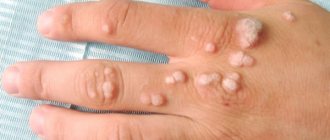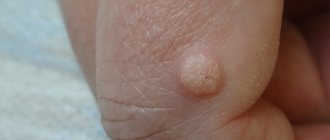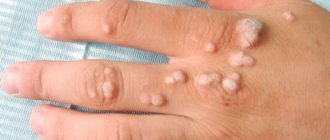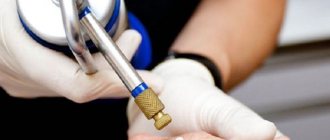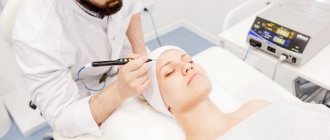To remove papillomas in modern medicine, several methods of physical influence are successfully used, including traditional surgery, radio wave method, electrocoagulation, etc. Regardless of the chosen method, proper care after removal of a papilloma, especially if the appendage was large, will help avoid complications and the occurrence of cosmetic defects ( scars) and relapse.
Medical clients can receive multi-level professional assistance - from diagnosis to removal of pathological tumors and consultations on rehabilitation. Our specialists are ready to receive you in Moscow, on Kashirskaya metro station, and in Ramenskoye, on st. Chugunova, 21-A.
What can't you do?
After the operation, you should not wet the wound, expose the injured area to friction or other influences. It is also necessary to exclude exposure to direct sunlight on the injured area. This is due to the fact that the skin at the operation site is too thin and delicate; sunlight can cause burns or irritation.
It is imperative to ensure that chemicals, including household and cosmetic products, do not come into contact with the wound. The application of foundation creams and lotions is not recommended. For the first couple of months it is better not to visit baths and saunas.
After removing the papilloma in the clinic, the specialist will give recommendations on special care for the wound. Self-medication in this case is strictly not recommended. The choice of care product depends on the individual characteristics of the person, the course of the operation, and the method of removal.
After removal of papillomas
Papillomas are removed by various methods, which inherently lead either to destruction (tissue destruction) of the skin tumor or to its excision within healthy tissue. After removal of papillomas, naturally, certain changes remain in the area of the skin where the element was, which precisely depend on the removal technique, size and location of the benign tumor.
Let's consider the main consequences of removing papillomas using different methods in the form of a table that reflects possible changes in the skin at the site where the papilloma was, because there are no general symptoms affecting the entire body as a whole, with rare exceptions.
| Papillomas removal method | Consequences of papillomas removal | |||
| Immediately after removal | During the first weeks after removal | The first months after removal | Long-term consequences | |
| Liquid nitrogen | Swelling, redness, swelling, slight burning at the extraction site | The papilloma darkens, dries up and falls off. A slight erosion or pink spot remains | The spot gradually turns from pink to white | The removal site blends in color with the surrounding skin. There may be relapses. |
| Electrocoagulation | At the site of the removed papilloma, a dark-colored crust, sometimes a small pit, remains. | After the crust falls off - a pink spot, a depression | Leveling out the depression, fading the spot | Recurrences at the site of removal are less common. A scar or inconspicuous spot may remain. |
| Radio wave method | Crust, depression. | Also | Also | A scar may also form, but it is less pronounced than with electro-coagulation |
| Laser | Crust | Same | Same | Relapses are much less common than with coagulation, but more pronounced scarring occurs. |
| Surgical method | Bleeding, red hemorrhagic crust, sometimes a stitch. | Red spot after the crust falls off | White spots | Relapses are more common. There may be a scar when removing large papillomas |
| Chemical method (including home methods) | Darkening of the papilloma or, conversely, pallor of its tissue. | Ulcer or erosion | Scars vary in color from red to pale pink | A scar remains. Relapses happen. |
After removing papillomas, caring for the resulting wound or crust is as important as the manipulation itself. The removal site should not be wetted with water for a week or be injured.
Treatment after removal of papillomas with antiseptic solutions is also necessary, which destroy pathogenic microflora and strengthen the protective crust that has formed in place of the element and protects the wound from microorganisms. We mainly use solutions of fucorcin and potassium permanganate, which must be applied until the crusts completely fall off.
When removed surgically, bandages with antibacterial ointments and solutions are applied.
Papillomas rarely appear after removal right in the same place where they were. But, given that this disease is associated with the human papillomavirus, which does not disappear anywhere after the tumor is removed, new papillomas may appear in neighboring or distant areas of the skin. With high virus activity and decreased immunity, this process can continue continuously. There was a lower number of recurrences of papillomas when anti-HPV therapy was prescribed and papillomas were removed with laser.
Let's briefly summarize. Removal of papillomas consequences:
- Small papillomas will go away almost without a trace.
- The formation of barely noticeable scars is possible.
- Formation of rough scars - if the skin is prone to keloids and with severe chemical burns at home.
- The appearance of new papillomas at the site of removal is rare. This can happen with home removal and using liquid nitrogen.
- The appearance of new papillomas in adjacent areas of the skin.
- Bleeding when removed surgically and in the presence of a large feeding vessel.
- Wound suppuration due to improper care after removal of papilloma.
Despite the abundance of possible outcomes, serious consequences of papilloma removal are very rare and practically never occur. But it is always better to remove existing small papillomas than to wait for a large vessel to grow into them and the manipulation may result in bleeding.
Doctors at the Private Practice clinic have extensive experience in removing papillomas using various methods. Almost all procedures take place as usual and without complications.
How to treat a wound?
As a rule, doctors recommend various antibacterial drugs enriched with a vitamin complex. The choice of medications depends on the characteristics of the procedure performed. It is understood that the doctor will monitor the patient’s condition until complete recovery.
The wound heals due to the formation of a scab from anesthetized tissue. There is no need to use potent topical preparations if the process proceeds without any peculiarities or pathology.
If there is an accumulation of purulent formations, then additional care of the operated area will be required. If everything is in order, and a crust has formed on the wound, it is lubricated with a solution of peroxide and furatsilin, then, after it has softened, it is removed, treating the resulting funnel. All these procedures are carried out in a clinical setting by medical staff.
Prevention of scar formation after papilloma
In order for wound healing to proceed without complications, the following recommendations must be followed:
- Immediately after surgery, an unhealed wound should not be wetted with water and sealed with a band-aid - open air promotes rapid healing.
- Excessive use of potassium permanganate and other antiseptics can cause tissue necrosis. However, the wound must be disinfected to avoid infection. It is best to process no more than 3 times a day.
- Under no circumstances should you try to peel off a scab - healthy tissue will form under the rough crust. If it is damaged, infection may occur and the formation of an atrophic, hypertrophic or keloid scar.
- For treatment in hard-to-reach places, it is better to ask for help in order to thoroughly disinfect the wound.
- Until the wound heals, avoid sports (so as not to cause increased sweating), swimming pool, sauna and sun (ultraviolet radiation provokes the growth of scar tissue at the very beginning of its formation).
- If the papilloma was on the genitals, it is necessary to undergo examination by a gynecologist or urologist, because the infection could spread to the internal organs.
- If lumps, bulges, etc. appear, you should immediately consult a doctor.
During the rehabilitation period, it is also necessary to use ointments and creams prescribed by the doctor for rapid healing and scar prevention.
How long does it take for a wound to heal completely?
As a rule, the wound heals within 2 weeks or a month. But the formation of a so-called keloid scar is possible, when the wound goes under the surface layer of the skin. If the patient has a tendency to develop such scars, which may exceed the size of the tumor, then it is necessary to choose the right method of removal.
If you decide to remove the tumor, you need to contact professionals. Any folk remedies can only be used under the supervision of an experienced dermatologist, otherwise the procedure may have unpredictable consequences.
How does healing and recovery proceed?
After removal of condylomas, healing usually proceeds quickly. But we must also take into account the way in which they were eliminated.
1. During cryodestruction , a small wound remains at the site of exposure to liquid nitrogen. It goes away on its own within 1-2 weeks.
2. As a result of chemical cauterization, scars often appear on the body and the percentage of relapse of the disease is very high.
3. After diathermocoagulation , patients recover quickly and can begin normal sexual activity after 2 weeks. However, the operation itself is the most painful of all.
4. Radio wave is non-invasive and minimally interferes with tissue structure, but has some limitations. It cannot be performed on people with implanted devices and functional elements. For example, with a pacemaker and various metal parts.
5. Healing and recovery are most optimal after laser removal of condyloma . The beam does not affect neighboring areas and does not leave scars, wounds or scars on the body. Has the shortest rehabilitation period.
6. Medicinal treatment in the form of an application is one of the longest-lasting treatment methods. But at the same time it has the lowest percentage of relapses.
Removal of condylomas: tests
A study must be carried out before removing any growths.
Tests help not only to identify the virus, but also to identify malignant neoplasms.
The best method for detecting the virus is PCR diagnostics.
It is based on identifying the DNA of the causative agent of the disease.
Even in a small amount of material, the virus will be detected.
Tissue samples from growths are used as biomaterial.
If there are a large number of condylomas, it is important to take samples from different places.
As a result of the analysis, the doctor receives quantitative indicators on the basis of which a diagnosis is made.
Important! After treatment and removal of condylomas, it is necessary to take a second test.
It will show whether the therapy is chosen correctly.
Quantitative PCR can be used to monitor treatment.
Features of the procedure
Removal of papillomas with nitrogen is usually carried out without any anesthesia. Some patients do not feel anything at all due to the fact that nerve fibers stop conducting pain impulses when they freeze. For other patients, the sensations are quite tolerable. When special tools are used for removal with liquid nitrogen, it goes very quickly and in one procedure you can easily get rid of all papillomas.
The healing time after nitrogen removal is further increased due to the fact that in the first days inflammation, swelling and rejection of dead papillomas cells occurs. Healing takes more than one week despite its small size. Before nitrogen removal, you should make an appointment in advance so that your doctor has nitrogen and tools prepared.
When should papillomas be removed?
The presence of papillomas in itself does not threaten health. In most cases, papillomas cause more aesthetic discomfort.
In rare cases, papillomas degenerate into malignant formations, and that is why experts recommend removing papillomas immediately.
It is necessary to remove papillomas if:
1. The papilloma is in an awkward place and constantly rubs against clothes. Constant physical contact of papilloma and clothing can provoke the degeneration of papilloma into a malignant tumor.
2. Papilloma causes pain when pressed or any other physical impact.
3. If papillomas are located on open areas of the skin (for example, on the face)
4. On doctor's recommendation
What happens after laser removal of papillomas and other tumors?
For the first two to four weeks, redness of the skin will be observed in the laser treatment area, which will subside over time. For this period of time, it is recommended to refrain from sunbathing, visiting swimming pools and baths, and also to carefully monitor that the wounds do not have any physical impact (for example, after a shower, do not rub the wounds with a towel but dry them with a hairdryer).
Treatment of the patient consists of strictly following all doctor’s recommendations and may include drug antiviral therapy.
Removing genital warts at home
It is impossible to carry out high-quality removal of genital warts at home.
This is due to the lack of necessary equipment to perform various therapy techniques.
The use of aggressive chemical compounds to cauterize warts can lead to serious complications such as burns of healthy areas of the skin, as well as incomplete removal of genital warts.
To remove genital warts, it is best to go to a medical facility and see a specialist.
This will allow for high-quality treatment, reduce the likelihood of relapse, and provide not only a therapeutic, but also a cosmetic effect.
Choosing a technique for removing genital warts in men
The choice of technique for removing genital warts in men is determined by:
- their number,
- sizes,
- localization
- individual characteristics of the patient’s body,
- capabilities of the medical clinic.
Genital warts, laser removal
If a diagnosis of genital warts has been made, removal by laser or diathermocoagulation can lead to the formation of scars.
Therefore, such techniques are undesirable when localizing warts in the area of the external genitalia.
Removal of genital warts in a medical facility
In the case of treatment of human papillomavirus infection in a medical institution, regardless of the chosen technique, their removal is carried out by a dermatovenerologist.
This eliminates possible incomplete removal of warts with subsequent relapse of the pathological process.
In the clinic, measures are taken to prevent complications.
Such as bleeding, damage to healthy cells or infection of the area of manipulation.
After removal of a wart, a venereologist gives recommendations regarding the prevention of their reappearance.
Questions and answers on removing papillomas
For all answers to questions , see the FAQ section.
- Warts
- Methodology
- Equipment
- Papillomas
- Indications
- Recommendations
- Moles
- Price
- Grinding
- Pregnancy
- Age
- A tan
- Infection
- Number of procedures
- Collost
- Cosmetic seam
- Lactation
- Anesthesia
- Restrictions
- Oncology
- results
- Eyelid
- Wine stains
- Ingrown nail
- Histology
- Zhiroviki
- Molluscum contagiosum
- Face
- Calluses
- Papillomas
- Dark spots
- Stretch marks
- Scar
- Striae
- Tattoo
- Acne
- Scars
Collapse answers
— I would like to remove a papilloma on the body, the area is about 1 square. see: Is a preliminary examination necessary? I visited an oncologist at the district clinic - he said it was an ordinary papilloma, he offered to remove it himself, I suppose with a scalpel, but he refused. How long does the procedure take? Focus on cost.
Inga
Answered by Markova Irina Vyacheslavovna, a cosmetologist-surgeon for 11 years - Laser removal of skin formations, including papillomas - the procedure is outpatient, performed under local anesthesia, the duration of removal is several minutes. Before removal, a consultation with a doctor is required, the cost of which is counted when calculating the cost of papilloma removal on the day of treatment. The removed material can be sent for histology for a fee to examine the malignancy of the formation. The cost of removal depends on the area - face or body, on the size of the papilloma in millimeters and the number of papillomas removed at the same time. Anesthesia is paid additionally.— Do you remove papillomas on the face? Will there be a scar? Can this be done on the day of treatment, do I need to make an appointment?
Olesya
Answers Irina Vyacheslavovna Markova, a cosmetologist-surgeon who has been working in Rednor centers for 11 years When removing papilloma with a laser, there will be no scar left. We work by appointment only. In the absence of contraindications, removal can be performed on the day of treatment.— Is pain relief used when laser removal of moles, warts, papillomas, scars, stretch marks or other neoplasms?
Irina
- In some cases, for example, when removing a papilloma on a leg, you can do without anesthesia. As a rule, anesthesia is used when removing tumors with a laser. This is due to the nature of the procedure, as a result of which the integrity of the skin is damaged and part of the tissue is removed. After applying anesthesia, the procedure becomes completely painless. However, after the procedure, the anesthesia wears off and pain is possible. In the case of removal of a mole, wart, or keratoma, when not only the superficial layer of the skin is affected, but also the deeper layers, infiltration anesthesia is used, i.e., an injection is given. This type of local anesthesia acts instantly; the skin in the immediate vicinity of the injection completely loses sensitivity for a short period of time. In the case of skin resurfacing, removal of stretch marks or scars, as a rule, topical anesthesia is used, when a drug is applied to the surface of the skin, which is absorbed into the skin within 20 minutes. After the specified time, the skin temporarily loses sensitivity, after which the procedure is carried out. In some cases, for example, when removing a tumor in children or in places that are particularly sensitive to injections, or with a low pain threshold, a combination of two types of anesthesia is used. First, topical anesthesia is applied to the skin, and after 20 minutes an injection is given for a stronger “freezing”
Discount program for our clients.
A discount system is provided for our clients, allowing them to receive services from the Rednor Cosmetology Centers at discounts. Depending on the number of services received, you can receive a discount card for 5%, 10% and 15% .
How to get a discount card for Rednor Cosmetology Centers?
1. A 5% discount card can be obtained after the first visit and payment for the first service (except for consultation). Card discounts are provided on services from the next visit.
2. A 10% discount card can be obtained after a one-time payment for services costing from 10,000 rubles. A 10% discount on the card is available from your next visit.
3. A 15% discount card is provided to clients who invited their 3 or more friends to use the services of the Rednor Cosmetology Centers. This card, which gives the right to receive a 15% discount, is personalized, and upon presentation, an identification document may be required. The right to a 15% discount on a personalized card cannot be transferred to others . If you want to get a 15% discount card - read the details
